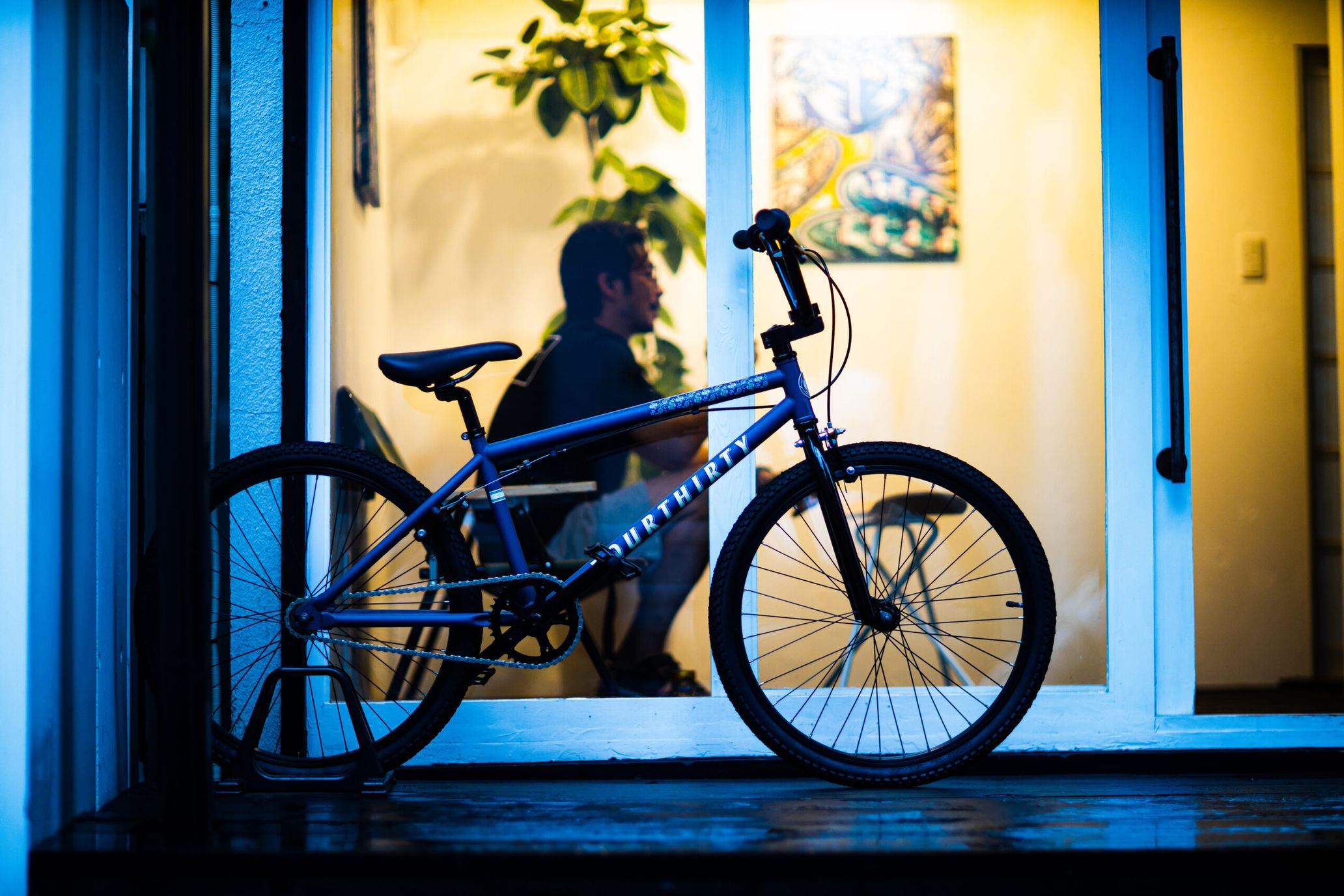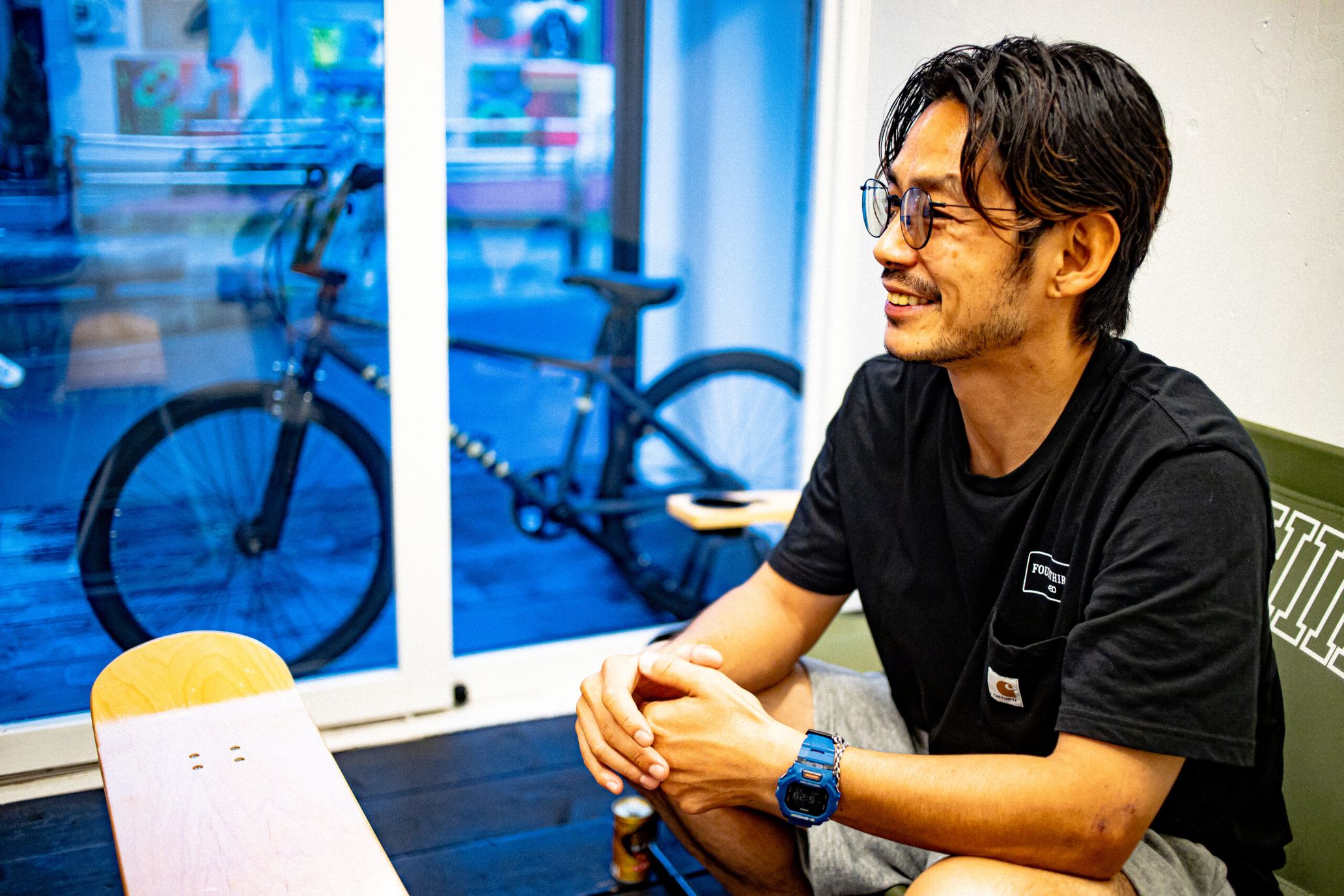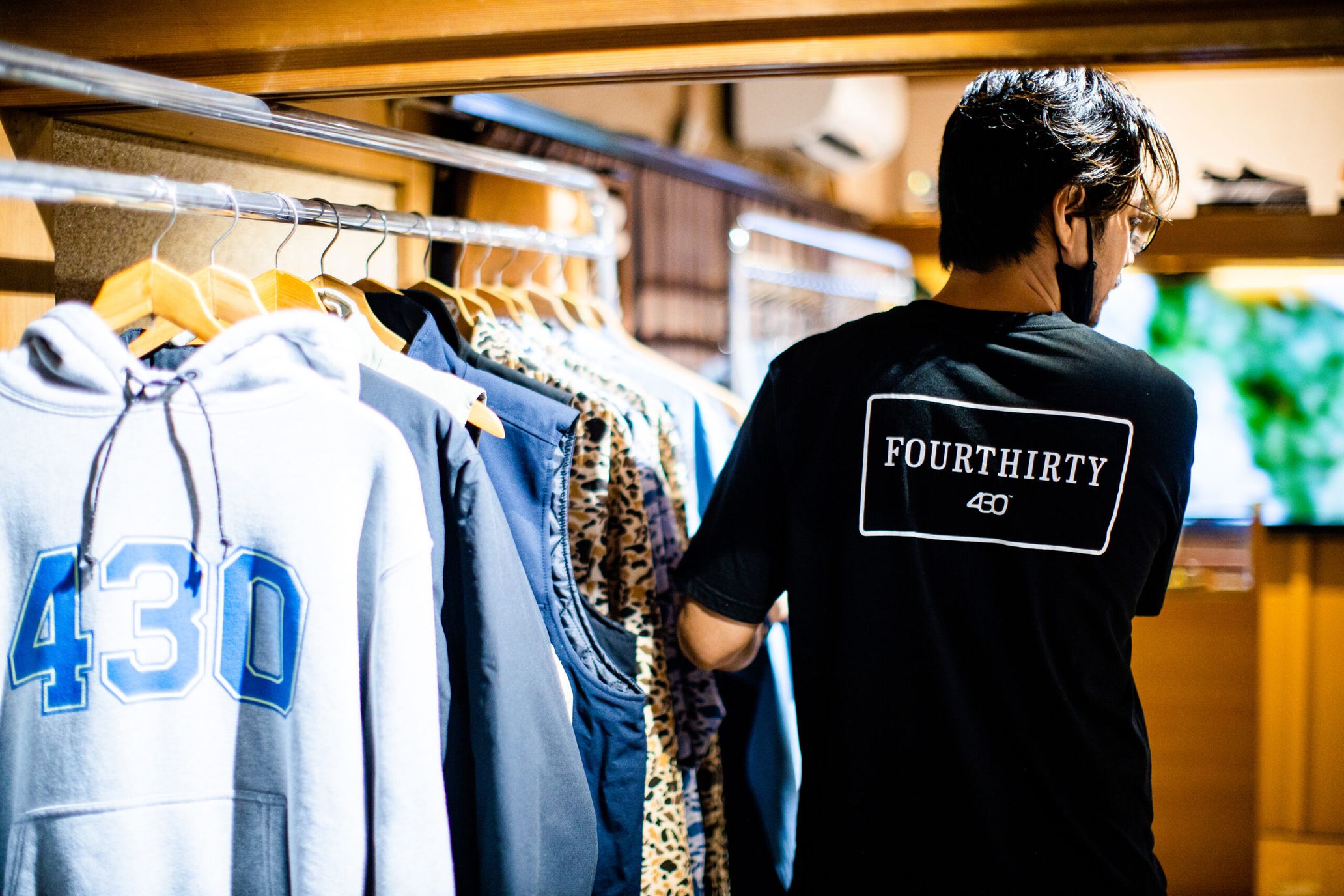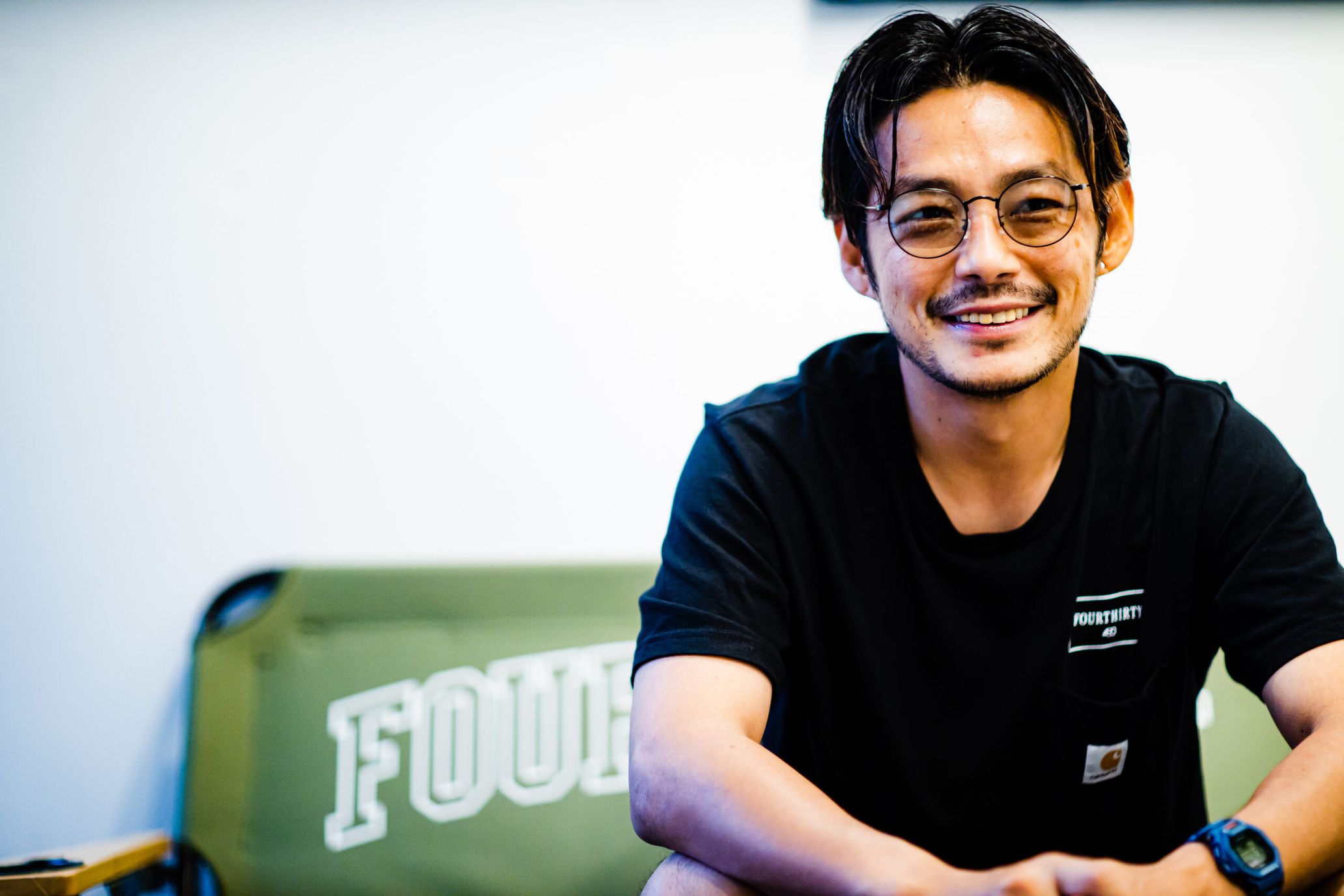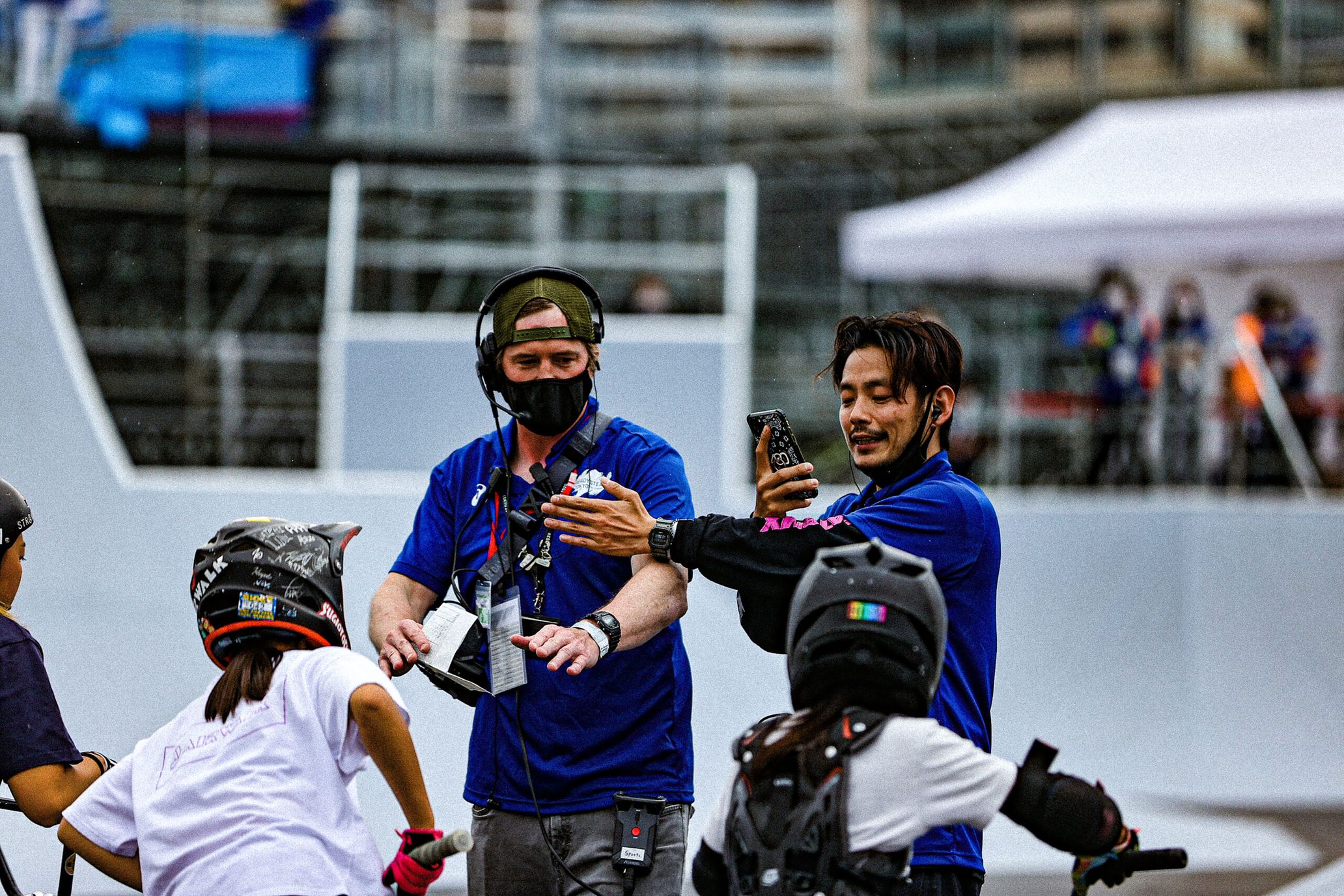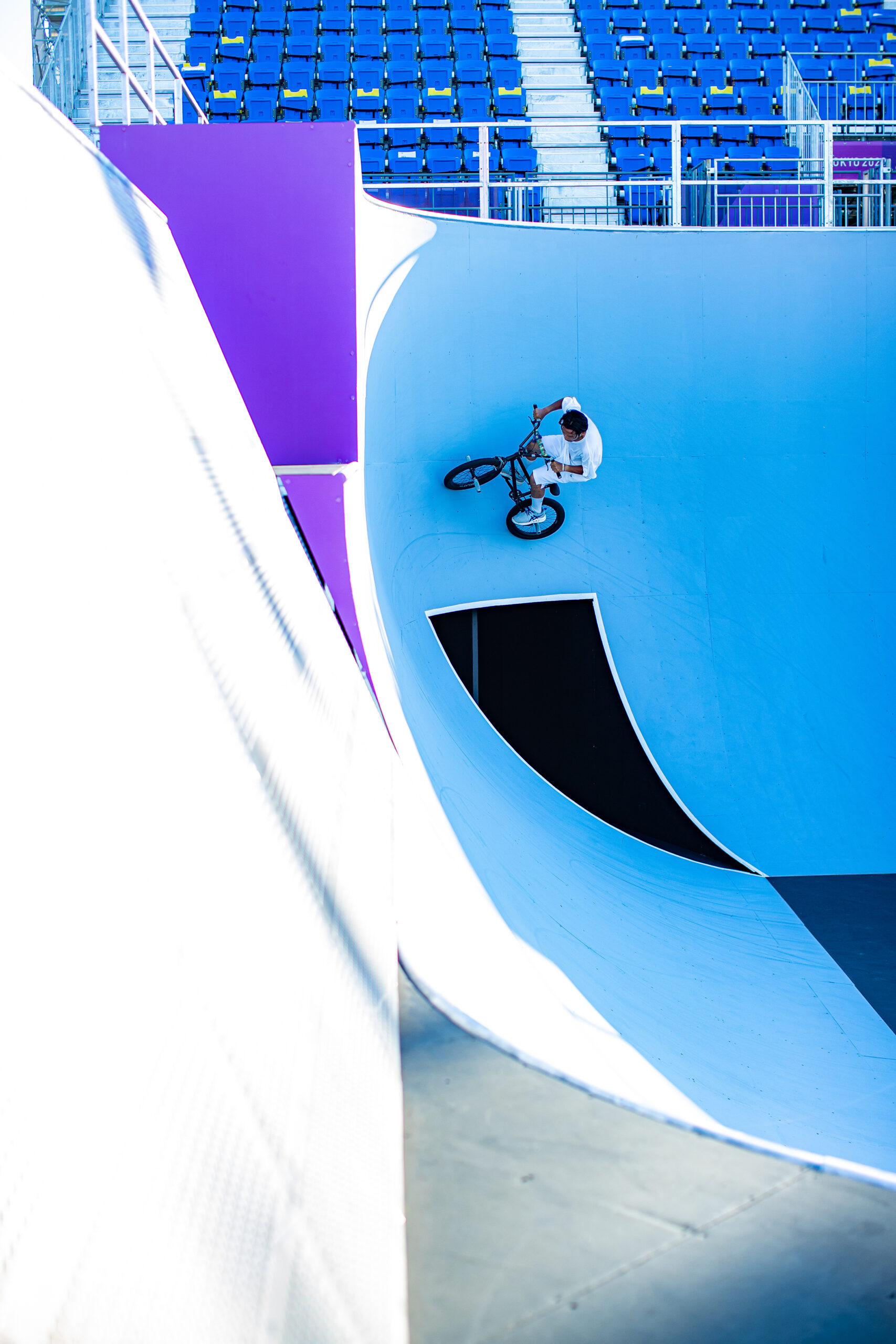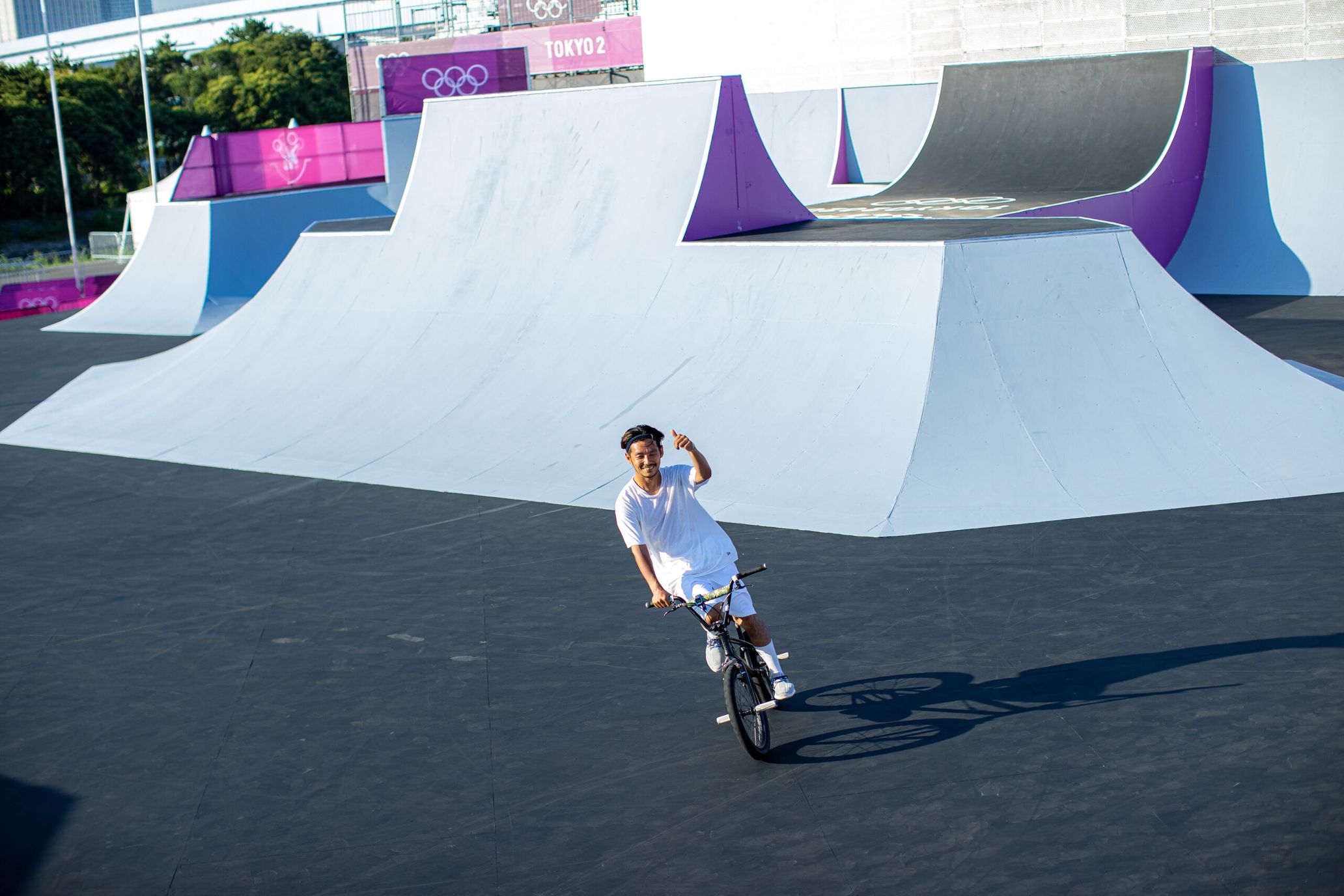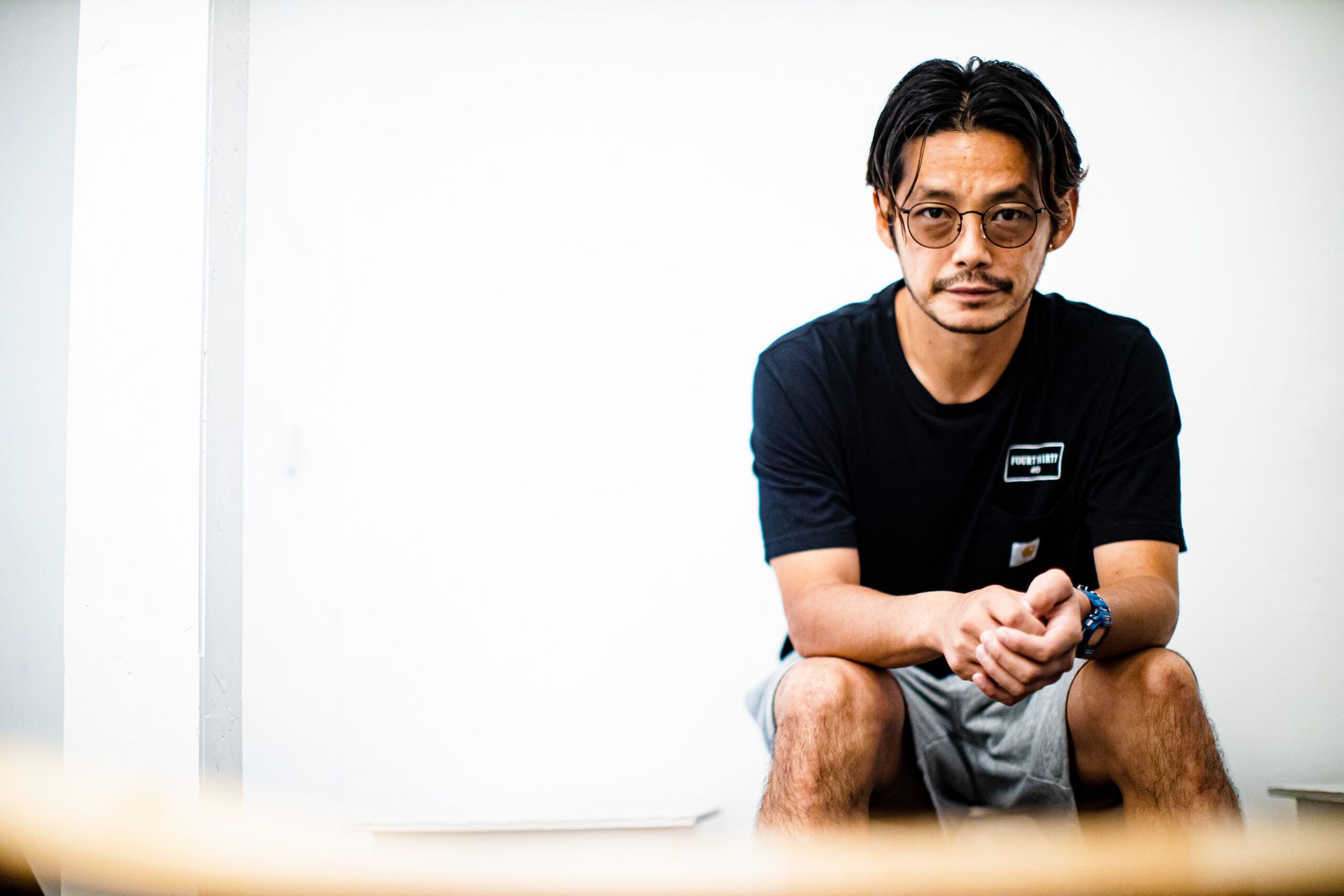BMX freestyle was added to the Olympics program for the first time at the Tokyo Olympics. All eyes were on the sport, and it didn’t disappoint. Hiroshi Uehara is one of the people that was involved in it. Why did he, the owner of streetwear brand 430 and a BMX rider himself, join the Tokyo Organising Committee of the Olympic and Paralympic Games? What did his role entail? Uehara looks back on the dawn of the BMX scene in the 90s, when he first started riding, all the way to the day of the Olympic games.
From the 1990s to the BMX scene today
——This summer, the BMX freestyle category wowed everyone at the Tokyo Olympics. Could you tell us about the scene when you started riding BMX?
Hiroshi Uehara (Hereinafter Uehara): I started riding BMX in the mid-90s. There weren’t a lot of shops that sold BMX gear, but there were riders, and people held competitions too. I mean, this was when C.C. Lemon aired a commercial where Keisuke Honda-san did a flatland trick. But BMX wasn’t as well-known then; it was only written about a bit in the back of Fine, a magazine.
——How did you start riding BMX?
Uehara: In my first year of high school, I went to Australia for the summer to study abroad. I was interested in skateboarding, so my host family took me to a skate park. The host family’s kid went there with a BMX bike, and when we got there, he went on a halfpipe on his bike instead of a skateboard. Until then, I thought BMX bikes were just for racing, so I found out for the first time that you could have fun with a BMX bike the same way you would with a skateboard. I borrowed and rode it a bit, and I remember it being fun. I told my friends about it when I came back to Japan, and they told me there was somebody who rode BMX near the supermarket parking lot, so I went to check it out.
——You mean there was a flatland BMX rider at the parking lot?
Uehara: Yes. It was more common for people to ride one bike for both flatland and street styles. There was a mix of riding on ramps, the street, and flat surfaces shown in American videos.
——What was it like seeing flatland BMX for the first time?
Uehara: More than anything, the rider was so stylish and sick. It wasn’t like he was wearing brands. The way he wore clothes was stylish. For instance, he would cut a pair of Toraichi workwear pants at the thighs and wear them as shorts with a plain oversized shirt. His flatland BMX tricks were dynamic, which made him even cooler.
——Which rider did you look up to?
Uehara: I liked Chad DeGroot’s style. His riding, fashion, and song selection for his videos were cool and playful. I’m friends with him now, as I rode for his brand and such. I’m going to his wedding next month in Florida (laughs).
——This is 430’s 25th anniversary; you founded it around Chad’s era.
Uehara: I founded it around two years after I started riding BMX. It wasn’t a brand at first. I entered a BMX competition in Hiroshima for the first time, and there was a space to fill in the sponsor name in the application form. Because it would make us look accomplished, Akio Kotani and I made one up to amuse ourselves. The date was April 30th, so we wrote TEAM 430 (Four Three Zero) as our sponsor. My turn came, and the MC introduced me like, “Hiroshi Uehara, sponsored by TEAM 430 (Four Thirty).” It had a nice ring to it, and so I began saying Four Thirty too. I told Kotaro Tanaka about it, and he said he wanted to join too. So, the three of us kickstarted it.
——What did you do with 430?
Uehara: I worked at a clothing store that sold streetwear brands in Okayama at the time. They taught me the ins and outs of making clothes, so I would make shirts.
——Then you started turning it into a brand and expanded to clothes.
Uehara: Yes. There are a lot of things you can’t learn from the streets to run a brand. My main occupation revolves around clothing because the owner [of the clothing store in Okayama] taught me how to sell and monetize clothes.
——When did you move from your hometown to Tokyo?
Uehara: In 2000, when I was 22 years old. I worked at a shop called HOMELESS/FRESHJIVE in Tokyo. I rode my BMX bike at Ikebukuro Nishi-guchi Park. There was a spot where skaters and dancers would get together, including Metropia and Magical Mosh Misfits members. There were other spots in Tokyo too.
——Was there a moment that made you feel that BMX was growing in popularity?
Uehara: Thanks to fashion magazines like Samurai Magazine and Ollie featuring pro skaters and riders as models, we became more well-known. For skaters and us riders, I feel like one of our goals was to give it our all, so we could be featured in magazines. Skateboards and BMX bikes sold well then. As many as 200 people would enter competitions.
Behind the scenes of the Tokyo Olympics and the future of BMX
——The BMX scene grew and became an official Olympic sport. How did you become a member of the Tokyo Organising Committee of the Olympic and Paralympic Games?
Uehara: Three years ago, Chad, who I mentioned before, contacted me like, “Van Homan (the cycling BMX discipline manager for the Tokyo Olympics) is going to live in Japan for a while, so could you show him around?” Van and I love BMX, and we have many mutual friends, so we got along right away. In part, because I had put together REAL TOUGHNESS, an event with different subcultures hosted by G-SHOCK, Van asked me if I wanted to work for the Olympics with him.
——How did it feel when he said that to you?
Uehara: To be able to be involved in a historical moment where BMX became an official Olympic sport for the first time—as a BMX lover, I had no reason to turn his offer down. Van’s a great person, and I love his character. Because I spent time with and got to know him, I made up my mind instantly. After three meetings, I started working for the Organising Committee of the Olympic and Paralympic Games in 2018.
——What did your role entail?
Uehara: There was a lot of administrative work. Because it was broadcasted on live television, I had to adjust the schedule in units of seconds, and I decided on what steps to take if someone got injured. I worked on procedures for staff we flew in from abroad to set up the venue and created a lot of documents for covid-19 countermeasures. There were many tasks like that. I learned so much from it.
@Hikaru Funyu
——What was it like working like that?
Uehara: I started working from 9 to 5, so my lifestyle changed drastically. Until then, I had only worked in apparel-related fields, so this was the first time I had the same lifestyle as an office worker. I didn’t have much experience in working under someone, so it was new. It was also nice that many of my coworkers were women.
——What motivated you the most?
Uehara: BMX riders, especially flatland riders, all want to come up with an original trick. People want to do something that’s never been done before, like a trick that combines another one and jumping from a particular point in a particular way. When you take that into account, the one thing any BMX rider in the world hadn’t experienced was making it to the Olympics. Building the Olympics as a member of the Organising Committee was like creating a new trick. My biggest motivator was doing something no one had done before.
——Were there other riders for the BMX category of the Organising Committee?
Uehara: Van and I reached out to people to join us like Kotaro Tanaka, Takashi Ito, who are members of 430, and street rider Nobuhiro “PEGY” Masuda. Many of the BMX Organising Committee members had experience in BMX. Of course, there were people on our team with no experience, but they listened to our opinions, and we also learned a lot from them.
——The day of the event must’ve been very moving.
Uehara: It was over in a second. It made me so happy when people contacted me like, “Good job,” and left comments on my Instagram after the Olympics finished. It reconfirmed the fact that I’m a true BMX lover. I felt like I contributed to the scene in a small way because the world learned about BMX.
@Hikaru Funyu
——Did you gain knowledge that you could put to use in the future?
Uehara: I understood once again that challenging yourself on something is important. It’s fun to learn about something new. I was able to experience so many things because I’ve continued working on 430 for 25 years. There were ups and downs, but a big event was made possible because I didn’t give up. It also led to my growth as a person.
——What do you wish to see in the BMX scene?
Uehara: It’d be great to see more star riders coming onto the scene. I would also like to see more people over the age of 40, like me, partake in competitions. I want to cultivate an environment with others, build parks where people could practice, and host competitions. At the Olympics, BMX was in the spotlight as a sport, but there’s a culture behind it. It’s vital to provide a space where people could engage in that. But it’s hard to make everyone satisfied and happy. So, I want to go ahead and do what I think of as fun. That way, like-minded people would have fun too. I want to keep on challenging myself without fearing failure.
Hiroshi Uehara
Born in 1977 in Tsuyama city, Okayama prefecture. Hiroshi Uehara founded TEAM 430, a flatland BMX team, in 1996 and started 430, a clothing brand. He produced REAL TOUGHNESS, a skateboard, BMX, and dance contest by G-SHOCK. Last year, Uehara started a YouTube channel called HOBBY! HOBBY! HOBBY! with artists PES and DJ NON. In August of this year, he opened Gallery HITCH HIKER TOKYO in front of DECADE TOKYO, the flagship store of 430, and continues to support the culture.
Instagram: @hiroshi430
YouTube: HOBBY! HOBBY! HOBBY!
Photography Hikaru Funyu
Text Shogo Komatsu
Transration Lena-Grace Suda

